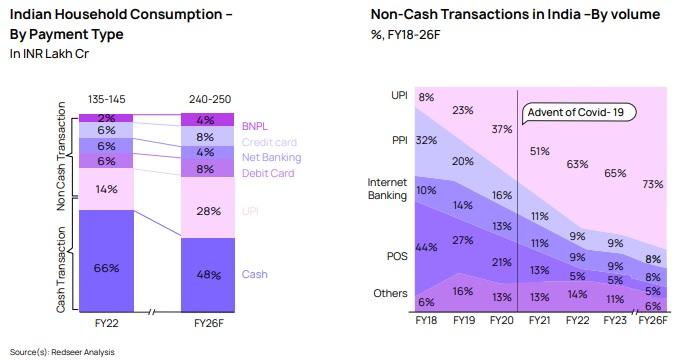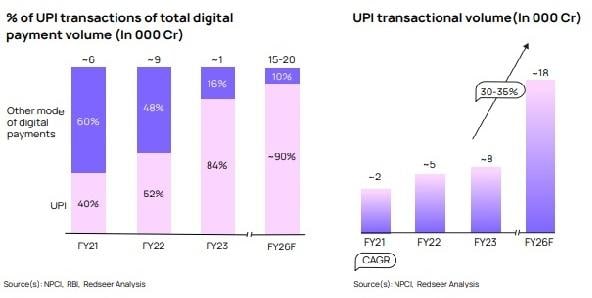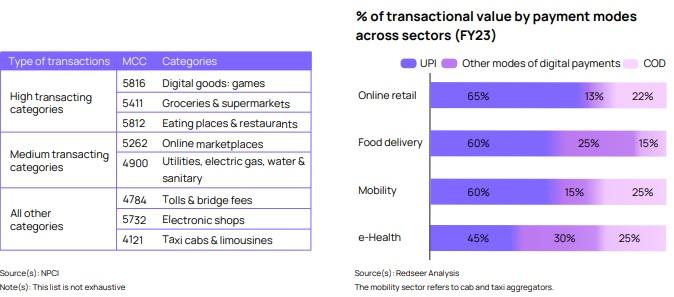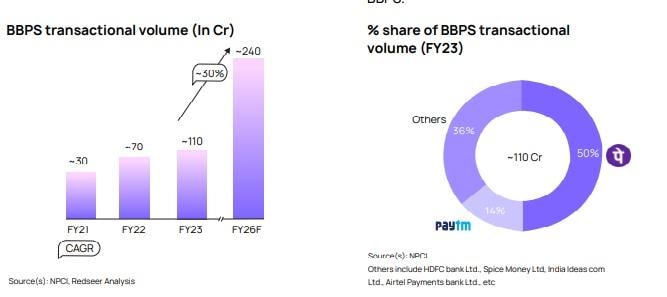How 50% of all transactions will be digital in 3 years
Currently, Indian households make 35% transactions digitally; which is expected to cross 50% by FY26. Online shoppers in India are expected to grow by 50% in the coming three years to exceed 30 crore users in the next three years.

UPI has captured the biggest share of digital payment volume UPI has gained widespread acceptance among the masses as the most popular digital payment method.

PhonePe, Google Pay, Paytm, and Cred account for over 95% of the market share. Among the various sectors, online retail leads the way, followed by food delivery and mobility (represents cab and bike aggregators).
As of FY23, 400-450 million people performed online transactions which is expected to rise to 700-750 million.

Unique mobile payment users who use UPI or wallets as a digital payment mode is expected to almost double from 350-380 million now to 650-700 million in three years.
The RBI conceptualized payment system, BBPS driven by National Payments Corporation of India (NPCI) also finds a mention in the Redseer report.
As per the Redseer findings, BBPS is poised to witness a 30% increase in transaction volumes and increase from 110 crore transactions in FY23 to 240 crore by FY26.

The report said the following emerging trends is the future of digital payments in India:
e-Rupi/CBDC: Prepaid e-vouchers are shared with the beneficiary via SMS or QR codes and redeemed without cards or online payment apps. These are currently used for disbursal of government benefits (Covid vaccinations).
Retail e-Rupi (launched in December 2022) is an electronic currency used primarily for retail transactions. Retail e-Rupi witnessed 800,000 transactional volume within two months since its launch. Redseer predicts that it will continue to grow owing to factors like high digital penetration for small-value transactions.
Voice payments: Enables online transactions via voice/call. Globally, by 2030, 50% of the transactions will take place through voice technologies. Wide customer reach across all city tier levels.
Wearable payment devices: A wearable device directly linked to the consumer’s bank account and functions as a debit card. The target audience for this is millenials and GenZ. Users can tap the wearable device during checkout without using physical cards. The Indian wearable market is valued at Rs 1.1 lakh crore crore in FY22 and expected to reach Rs 1.4 lakh crore by FY30.
Biometric payments: Biometric payments is a technology that uses biometric authentication based on the user’s physical characteristics of users, such as fingerprints, facial recognitions, and iris. Individuals can save their biometric patterns on the payment page which can be used to make payments without the need for physical cards or user details.
 Loan, Personal Loan, Home Loan, Business Loan,Loans in India Loan in India, Personal Loan, Home Loan, Business Loan, Loans in India,Loan Finance,Loan in India, Get Instant Personal Loan,Home Loan, Business Loans in India
Loan, Personal Loan, Home Loan, Business Loan,Loans in India Loan in India, Personal Loan, Home Loan, Business Loan, Loans in India,Loan Finance,Loan in India, Get Instant Personal Loan,Home Loan, Business Loans in India